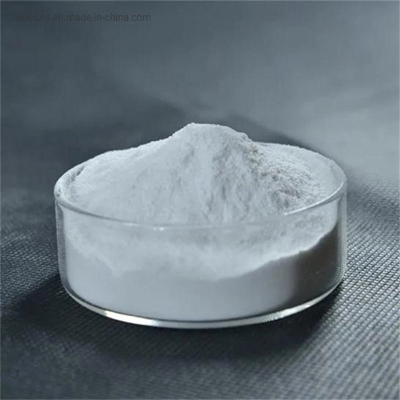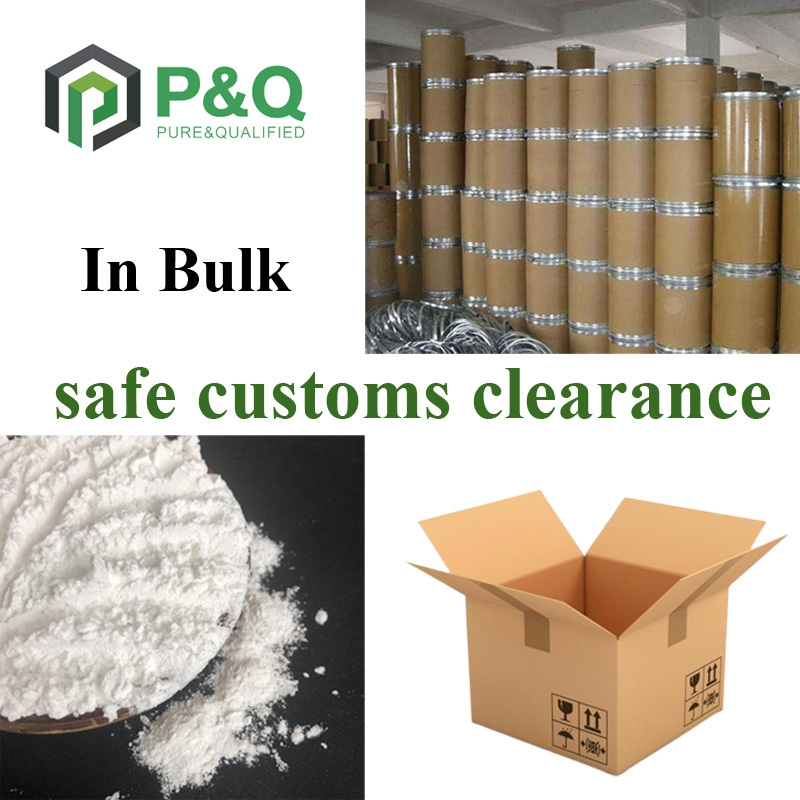Ecological environment and control of cultured waters
-
Last Update: 2021-01-07
-
Source: Internet
-
Author: User
Search more information of high quality chemicals, good prices and reliable suppliers, visit
www.echemi.com
cultured water environment refers to all kinds of natural conditions necessary for the survival of aquatic economic animals, which is the general term for the environmental conditions required for the spawning, breeding, wintering and migration of various economic aquatic plants and animals. It consists of an interconnected non-biological environment (including the physical properties of water, chemical properties, meteorology, substrates, runoff, etc.) and a biological environment (including plants, animals,
microorganisms
, etc.). Waters suitable for the growth, reproduction, baiting, wintering and migratory migration of aquatic economic animals are collectively referred to as cultured waters. According to the production habits, the cultured waters are generally divided into marine, fresh and salty fresh water, or natural, artificial and semi-artificial water types.。 Catalog
..
. The water body renewal fast river water flow for many years, the water flow constantly changes, its renewal period is shorter than other land water bodies, the water flow and surface material contact time is not long, the water surface evaporation is small, so compared with other land water bodies, the mineralization of river water is low, once polluted, easy to restore, is a favorable factor for water protection.2, affected by the hydro-meteorological conditions in the basin, the chemical composition of water changes rapidly The composition of river water changes with the increase and decrease of water volume and the convergence of tributor or slope water flow in the course of flow. Atmospheric precipitation under the influence of meteorological conditions not only changes the hydrodynic dynamics of rivers, but also adds dissolved substances to the atmosphere.3. Hydrochemical composition and aquatic biological activity strength and water supply source related aquatic biological life activity process for the river water to provide a large number of organic matter and the atmosphere does not contain a very small amount of gas composition, but biological processes on the water ion and gas composition is relatively weak, gas composition in molecular form. In addition, the chemical composition of water varies strongly with the flow of water, change and time. The reason is that river water not only has the exchange process with surface water, but also has close connection with groundwater, which makes the chemical composition of river water complex and diverse.4, the frequent human activities of the river is vulnerable to pollution river system is the main water supply of human society, but also more places of human production activities, it is polluted with many opportunities, many ways, a wide range of pollutant sources, complex types, once the pollution will seriously affect human life and production activities.2. Lake water
1, the water flow is slow, the water change cycle of the lake is generally poorly mobile, its turbidity is low, transparency is high, but the water flow is not easy to mix, there will be uneven distribution of water quality, especially deep-water lakes or lakes with large capacity is more significant.the water exchange cycle of lakes refers to the time it takes for the water accumulated by lakes to be replaced by the average annual amount of water in the lake. Lakes with a water change cycle of less than 1 year (e.g. the five freshwater lakes in the eastern plains of China) have short water exchange cycles, which can be replenished quickly after being utilized, with abundant water and good water quality, and full use of water resources. Lakes with a water change cycle of 1 to 3 years (e.g. Bochi, Bohai, Bosten Lake, etc.) can only be partially utilized. If we need to make great use of the lake water, we must protect the ecological environment of the lake. Lakes with a water change cycle greater than 3 years are mostly located in arid areas of China (e.g. Ulangu Lake has 8.5 years, Sheep Zhuozhu has 25.5 years, Qinghai Lake has 60.4 years). The water of these lakes is slow to replenish, so if the lake water resources are quoted a lot, its ecological environment will inevitably deteriorate. Care must be taken when developing and utilizing these lakes.2, mineralization higher than the river due to the water to the substrate erosion effect is strong, coupled with the evaporation of lake water, the general lake water mineralization is higher than the river. And because the water stays in the lake for a long time, this will enhance the lake water on the lake basin rock, soil erosion effect. At the same time, the lake surface is wider, under the strong evaporation of water surface, improve the mineralization of lake water, and eventually lead to changes in water quality composition.3, water quality composition changes by the lake area dog small impact lake area size will not only affect the regulation of its water volume, but also lead to changes in water quality composition. Generally speaking, the water quality of large lakes is more stable than that of small lakes, while the water quality of small oscillations has strong regional characteristics, and the water quality of large lakes is equivalent to the average state of water quality in large areas.4, aquatic biological factors on the water gas and biogenic substances have a large impact on the general heat conditions, low mineralization of small lakes in biological activities, often become one of the most important factors in the dynamic change of water quality. For the Great Lakes or lakes with high mineralization, the biological effect is reduced., reservoir water
reservoir is mostly composed of river dams of artificial lakes. Its hydroan and water quality conditions change dramatically from river to advent, and the water environmental characteristics of reservoirs are closely related to the hydrometric characteristics of reservoirs.(-) Reservoir Type 1, the size of reservoirs by reservoir size is usually divided into large, large, medium and small reservoirs by reservoir size or size.2, according to the reservoir form, according to the reservoir area of the landform, submerged reservoir bed and water surface form, divided into the following four types:(1) valley river-type reservoir built on the valley river reservoir. The dam is often lying between the canyons, the Ku Zhouqun mountains are ringed, the slope is steep, the slope is often 30 degrees to 40 degrees above; 20 to 30 m, the maximum water depth of up to 30 to 90 m such as Zhejiang Xin'anjiang Reservoir (40,000 hm2), Anhui Meishan Reservoir (50,000 hm2), Gansu Liujiaxia Reservoir (106,000 hm2) and so on.(2) a hilly lake-type reservoir built on a river in a hilly area. The hills around the reservoir are undulating, but the slope is not large, the shore line is more tortuous, the multi-ku Bay, the water extension distance is not very large, the new open water area is often concentrated in the dam in front of a block or several areas; Such as Henan Nanwan Reservoir (5666.7 hm2), Jiangsu Shahe Reservoir (1373.3 hm2), Zhejiang Qingshan Reservoir (566.7 hm2).(3) plain lake-type reservoirs formed by damming on plain or plateau river or low-lying land. The reservoir is surrounded by shallow hills or plains, open water surface, open water area, the shore line is more straight, less bay, compared with the valley reservoir, the unit area of the reservoir capacity is small, the water level fluctuations caused by the reservoir area changes greatly, often have a larger drop area, the bottom of the reservoir is flat, more silt, the maximum water depth is about 10m. Such as Henan's Cebu Lake Reservoir (1. 490,000 hm2), Anhui Lushan Lake Reservoir (1733.3 hm2). (4) a miniature reservoir built in a creek or depression for irrigation of farmland, with a similar nature to a pond. (2) The water environment characteristics of the reservoir the water environment of the reservoir has the characteristics of rivers in the upper reaches and lakes in the middle and lower reaches. In addition, the reservoir also has its own characteristics: 1, reservoir water in a state of regular exchange, nutrients and faster circulation, water temperature, dissolved gas distribution is more uniform, thus conducive to the growth and reproduction of fish and their plankton. Especially in the early days of the reservoir, due to the flood of large areas of land, its organic matter and soluble inorganic salts into the reservoir, while the water temperature in the reservoir increased, evaporation intensified, transparency increased, which provides good conditions for plankton and fish breeding, growth. 2, the reservoir's falling area (with the reservoir water level rise and fall and the alternating changes of the land and water area, called the falling area) is an important source of energy for the reservoir ecosystem. During the exposed phase of the fall zone, many land-based plants (especially wetland plants) grow in large numbers, absorbing solar energy to produce large amounts of organic matter, and providing food or nutrients for fish and other aquatic organisms (organic rotting into fertilizer) when the falling area is flooded. 3. Upstream of the reservoir, some sections of the reservoir river have a certain flow rate, flow state, due to the stimulation of the current during the flood season, some river-like spawning fish (such as grass fish, herring, herring, slugs, etc.), their mature pro-fish can be traced up and find a certain spawning place, which is an important feature of the reservoir as a fish breeding environment. 4, the reservoir's middle and lower reaches of the water depth, the water flow is extremely slow, its transparency is large, oxygen-rich, plankton biomass is large, is a good place for fish growth and fattening. 4. Seawater
l, seawater contains complex salt solutions, a variety of dissolved gases and a large number of organic and inorganic suspended substances of various particle sizes The ocean is the final destination of surface solute runoff, accumulating all the chemical elements after surface weathering. It is estimated that 500 million years ago the salt content of seawater was 25×103, and the original seawater was almost entirely fresh water. But now in addition to the near-shore sea area, especially the estuary area due to the influence of continental runoff, the salinity of sea water is lower, the salinity of sea water in the open ocean is generally 33 to 38, the average is 35. Although the rate of salinity increase is slow, but in the future geological age, the salinity of sea water will be further improved. 2, sea water alternating conditions, coupled with the large volume of water, local water quality changes will not affect the entire ocean Ocean accounted for 70.8% of the entire earth area, water volume of about 13.2×108km3, accounting for 97.3% of the world's total water storage. Such a large body of water, with the unique shape of the ocean, climatic conditions, so that there are a variety of seawater movements in the ocean, such as tidal wave movement, wave movement, sea water mixing and so on.
these movements allow the seawater to be replaced and mixed very well, and the complex chemical composition of the sea water allows the ocean to accommodate, decompose and spread throughout the ocean through various movements of the sea water. It is precisely because of these movements, coupled with the large capacity of the sea water, that the ocean as a whole is not easily polluted. However, with the rapid development of modern large-scale industry, the scale of human activities is increasing, the result of which has made great changes in the ocean, especially the discharge of various waste substances and heat into the ocean, to the coastal waters have brought obvious pollution, and now has spread to the vast ocean, so that pollution has become a global scale of the big problem. 3. It is well known that the chemical composition of seawater varies greatly with geographical latitude and distance from land, and the distribution of solar radiation energy at different latitudes on Earth is uneven, which makes the sea water temperature, seawater chemical composition and composition and distribution of aquatic plants and animals at different latitudes significantly different.
at the same latitude, the addition of land-source material carried by sub-continental runoff makes the hydrochemical composition of the near-shore waters of the ocean more complex and the biological population increase. As a result, the general ocean water transparency is large, while the nearshore sea water transparency is relatively small. 4, continental solute runoff and biological precipitation directly affect the equilibrium relationship of chemicals in seawater Sea water salinity is almost entirely determined by several major ions. These main ions have a fixed program: Cl->SO42->HCO32-, Na->K->Mg2->Ca2-plus, and the ratio of the number of ions is approximately constant, which changes at different depths in different sea areas or in the same sea area. This constantity is better in oceans far from land and not affected by continental runoff, but in offshore areas, the constant nature of the chemical composition of seawater changes to varying degrees due to the large number of organic, inorganic substances and biological effects of continental runoff. 5, estuary
l, water movement complex, mixed effect, water body renewal period short salty fresh water intersection estuary, because the human sea estuary is generally affected by the ocean tides, the impact of river flow, the estuary salty fresh water can be fully mixed and exchanged, and eventually with the current or the sea area near the shore flow into the sea. 2, the composition of water chemistry mainly depends on the water source material, runoff along the way to wash the estuary area since it is the intersection of river water and offshore seawater, the chemical composition of the mixed water is obviously related to the original chemical composition of the two types of water. And the river in the flow of people before the sea, in the land experienced a long process, during this period due to the water flow of the flushing effect, along the way a variety of substances were taken away by the flow, and then affect the chemical composition of the river. 3, changes in water chemical composition by the intensity of salty fresh water mixing is more affected in the estuary area of saltwater mixing is a process. Because the density of seawater is greater than that of fresh water, the river is generally at the upper level when it meets, and the sea water is in the lower layer. When the river hydration situation is the main, the water flow is shown as a single flow to the ocean, although also affected by the ocean tides, at this time the water chemistry composition of the intersection area is close to the river water quality; The water quality of the interchange area is more complex and unstable, and when the marine hydration situation dominates, i.e. when the ocean tides have a great influence on the river area, the sea water can be traced up to a deep distance in the river, at which time the chemical composition of the water in the interchange area is closer to the characteristics of the sea water. 4, aquatic organisms restricted growth, affecting the physical and chemical characteristics of water in the intersection area Under different salinity conditions, fresh water, semi-forming water and seawater species of organisms also change with. The salinity of the estuary changes greatly, and only a few widely salty species can tolerate this change. The unique hydrovineical conditions in the estuary have led to a limited number of native species and have impeded the movement of many freshwater and seawater species. In particular, low salinity and low density can be fatal for many marine fish to lay floating eggs. However, in many estuaries, a large amount of fresh water brings abundant natural bait, organic flocculants and nutrient salts, and some aquatic economic animals adapted to these living conditions have developed greatly in their individual populations, often forming fishing hydrants. 6. Groundwater
exists be below the surface, and all natural water filled with soil, rock pores, cracks, and caves belongs to groundwater, which is caused by precipitation seeping through the soil formations. It is sometimes replenished through surface water seepage
This article is an English version of an article which is originally in the Chinese language on echemi.com and is provided for information purposes only.
This website makes no representation or warranty of any kind, either expressed or implied, as to the accuracy, completeness ownership or reliability of
the article or any translations thereof. If you have any concerns or complaints relating to the article, please send an email, providing a detailed
description of the concern or complaint, to
service@echemi.com. A staff member will contact you within 5 working days. Once verified, infringing content
will be removed immediately.







